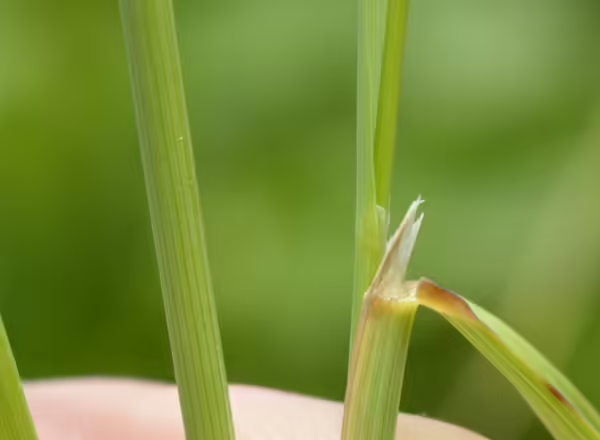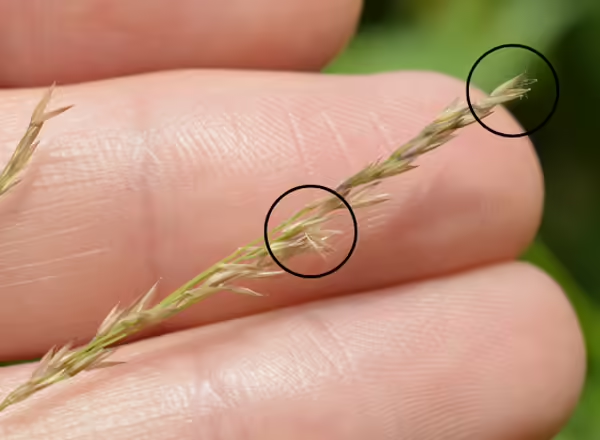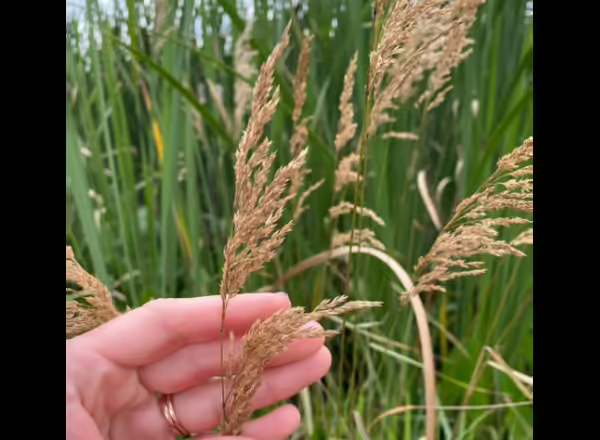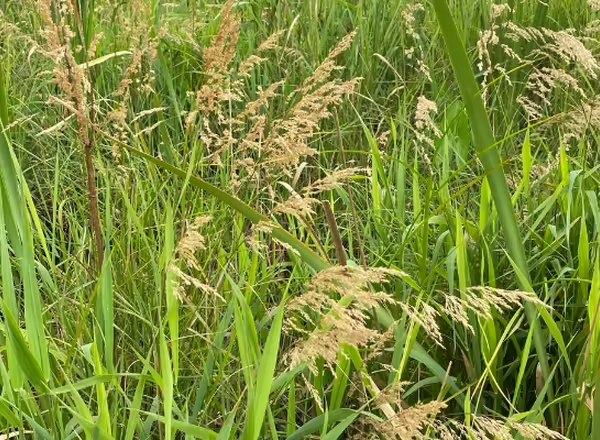
About a month ago I was in the Chicago region for a conference, and I took the opportunity to stop by Volo Bog. If you’ve never been, this unique spot is home to an open-water quaking bog, which you can see if you hike the boardwalk loop. While hiking I found some clumps of Bluejoint Grass, which is a wetland grass. It was growing among cattails and swamp milkweed. This grass is found in northern and central Illinois, so I took the chance to snap some pictures since I don’t see this grass down in southern Illinois where I work.
Bluejoint Grass, Calamagrostis canadensis, is a native, cool-season grass that blooms in spring to early summer. It likes growing in marshes, swamps, and wet prairies. It spreads vegetatively through underground rhizomes, and so can form colonies in areas where it isn’t outcompeted. I haven't spent a lot of time talking about wetland grasses on the blog before, so let's take a closer look at this one!

Looking at the leaves
Bluejoint Grass grows about 4 feet tall, and its leaves have a blue-gray color to them. The leaves are rather floppy, in comparison to other grasses that have stiff, thick leaves. You can find a tall, membranous ligule at the base of the leaf blade when you pull a leaf away from the stem.

Looking at the spikelets
When it flowers, this grass produces a narrow panicle inflorescence, which is a branched flower cluster. The spikelets (flowering units) of the grass can be green to pink. If you look closely or use a hand lens, you should see a white tuft of hairs sticking out from the spikelets, which is a helpful identification characteristic. I found Bluejoint after the prime flowering season, so the spikelets were already yellow-brown in color. The branches of the panicle were also drooping to one side, which commonly happens after blooming.
A useful grass for restoration efforts
While not necessarily recommended for planting in small spaces or a home garden, Bluejoint Grass is a great option for larger scale restoration efforts as a grass that can handle wet soil and establish into a stabilizing plant cover.
Need a refresher on grass identification terms? Check out this blog post!


Thank you for reading!
Never miss a new post! Subscribe to our email list to get updates each time a new post is available.
Give us feedback! How helpful was this information (click one): Very helpful | Somewhat helpful | Not very helpful
About the Author: Erin Garrett is a Natural Resources, Environment, and Energy Educator for University of Illinois Extension serving Alexander, Johnson, Massac, Pulaski, and Union counties. Erin develops and delivers high impact programming to adults and youth to help them develop an appreciation for natural resources and to empower them to make small changes to positively impact the environment. Erin’s programming focuses on why homeowners should consider choosing native plants, how to support native pollinators, how to identify grasses, how to identify and manage invasive species, and developing an appreciation for prairie ecosystems.